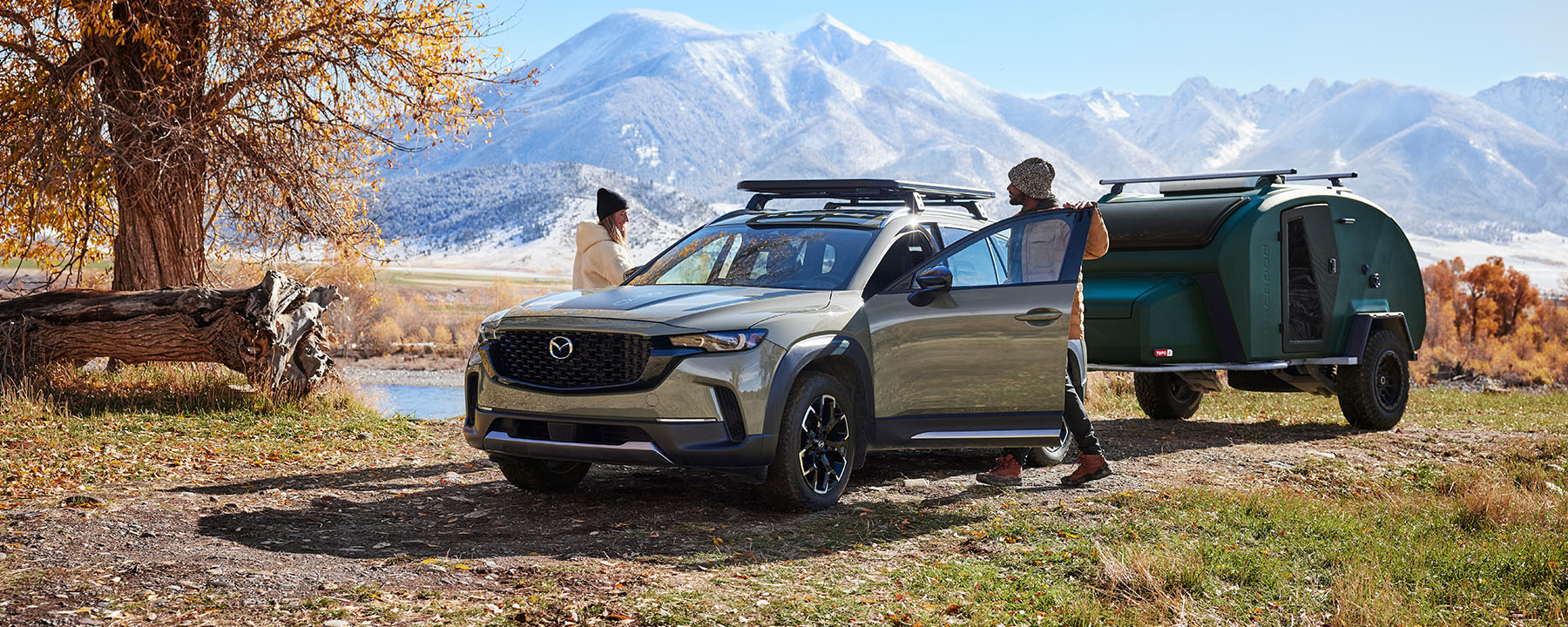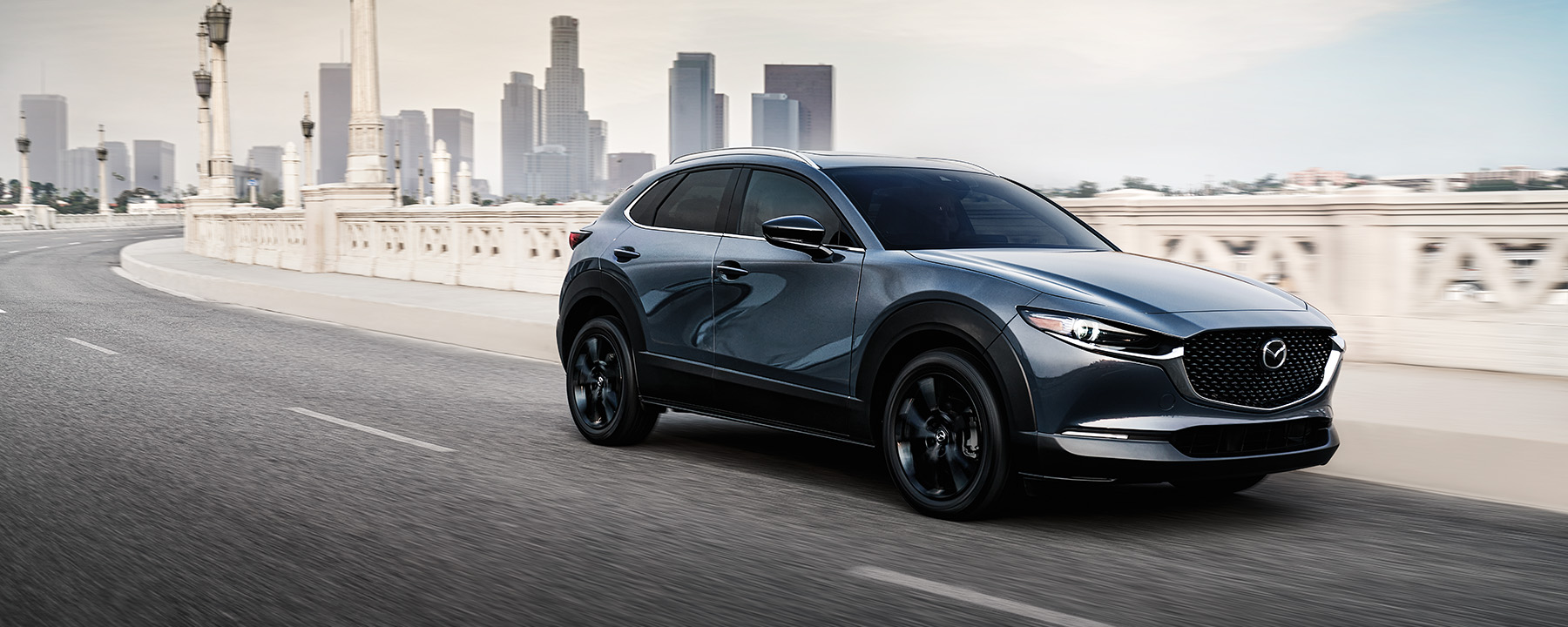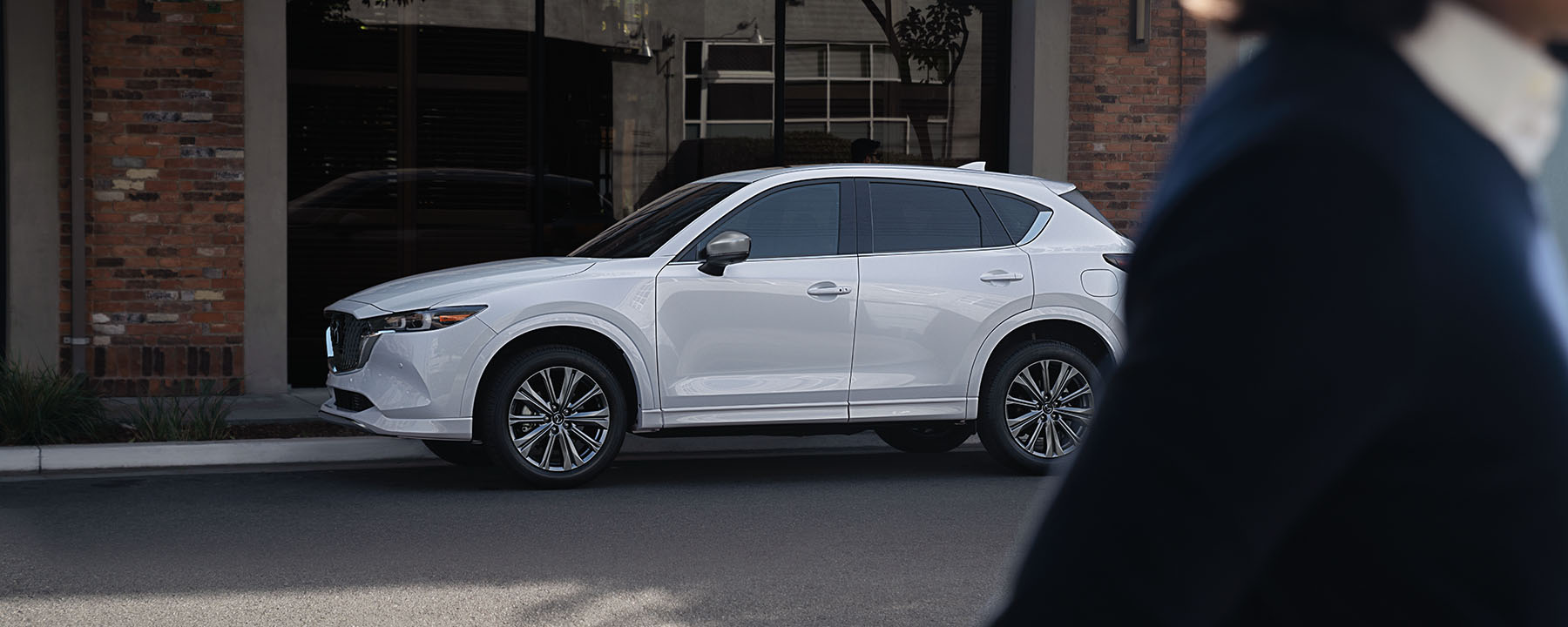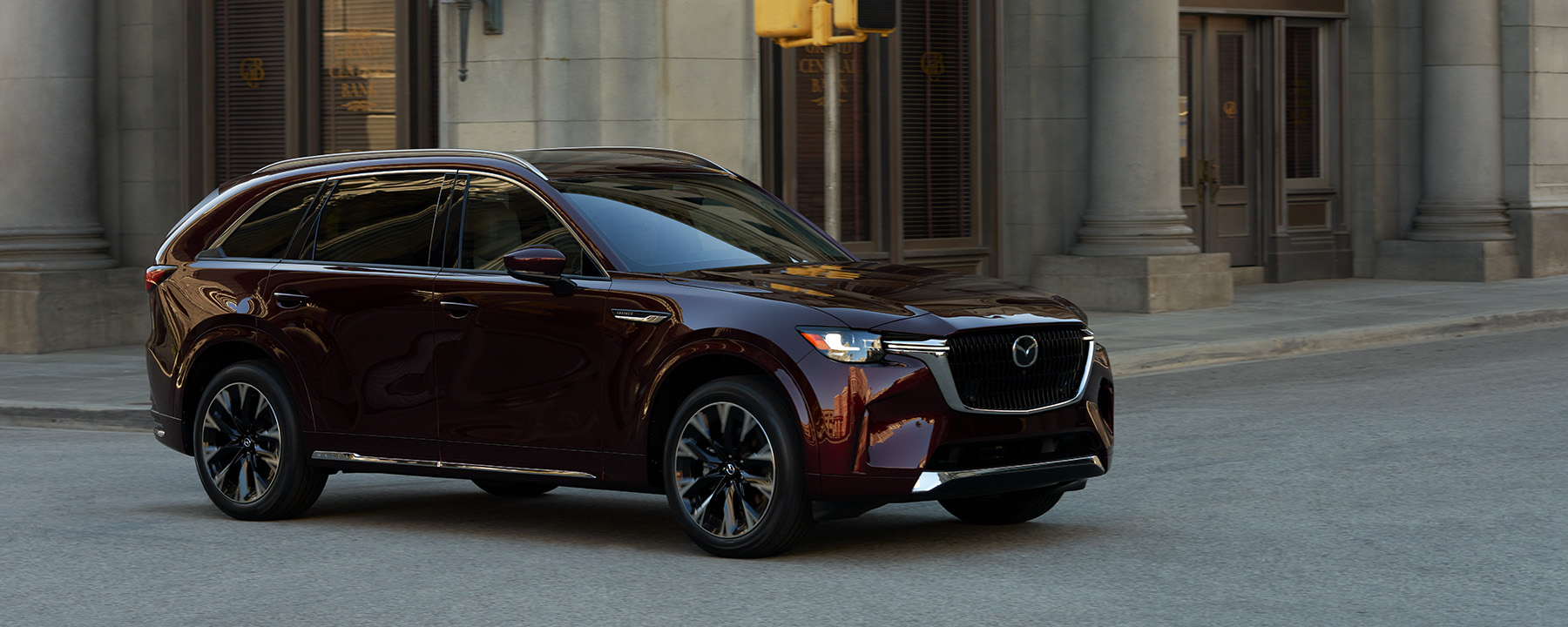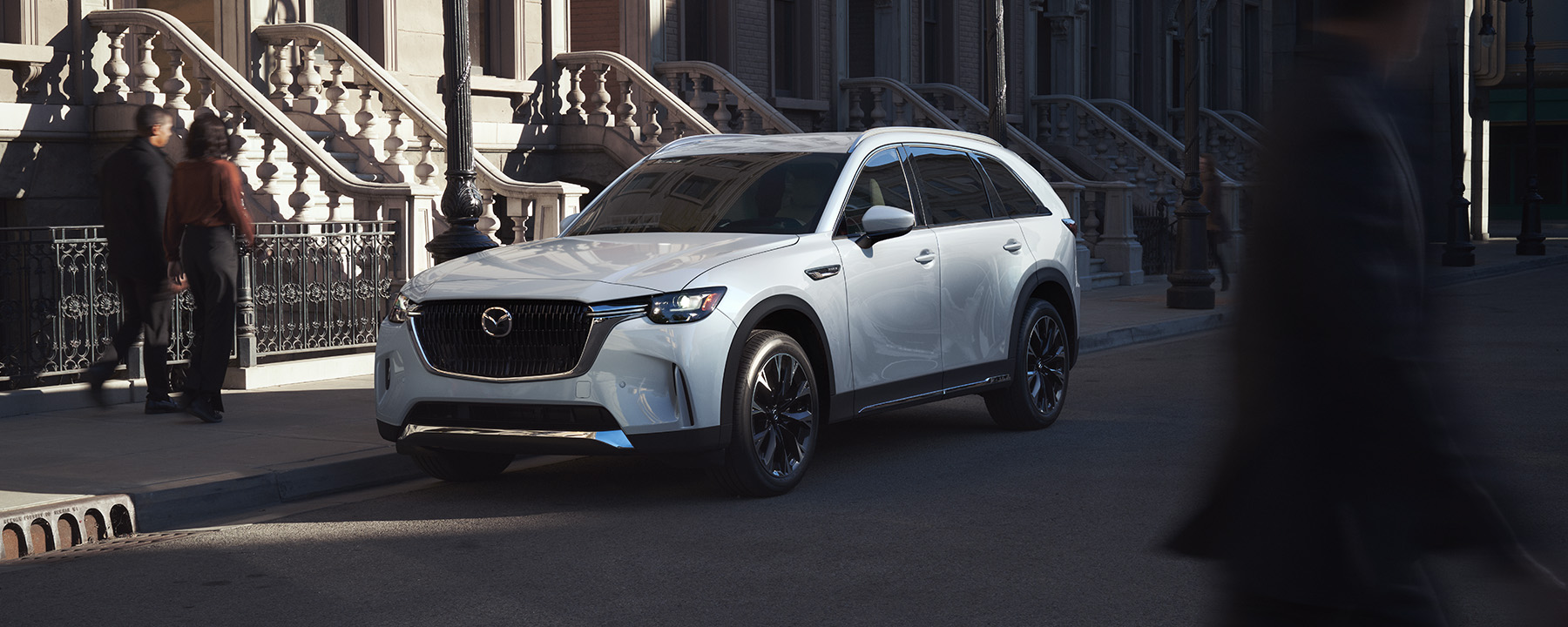SUV Meaning: What Does “SUV” Stand For?
The acronym SUV stands for sport utility vehicle and refers to vehicles that have ample space and stand up to rugged terrain.
What is an SUV?
The acronym SUV stands for sport utility vehicle and refers to a loose classification of vehicles that have ample passenger and cargo space and were historically built to handle off-road driving. The exact definition of what makes an SUV an SUV has changed over time and tends to vary even to this day. Let’s take a closer look at what an SUV is, its history, the types of SUVs, and what sets SUVs apart from other types of vehicles.
A brief history of the SUV
The emergence of SUVs can be traced back to the 1930s and WWII when militaries—particularly those in the U.S. and the U.K.—called for the creation of a vehicle that could safely carry troops through harsh driving conditions. These military-style vehicles used four-wheel drive, were built to go off-road, and would eventually evolve into modern SUVs.
SUVs as we know them today, with their more refined designs and amenities, grew in popularity during the 1980s and 90s. Driven by outdoor enthusiasts, families, and as work vehicles alike, they are highly versatile and multi-functional vehicles, many of which can handle everything from city driving to off-road excursions.
Defining SUVs
While SUVs can vary significantly, they tend to share these characteristics:
● High ground clearance and seating
● Spaciousness
● Off-road capabilities
● Boxier look
● Towing capabilities
● 4WD or AWD
Preproduction 2024 Mazda CX-50 2.5 Turbo Meridian Edition with Apex Package, towing accessory and third-party equipment shown. Please refer to vehicle Owner’s Manual for details regarding towing capacities, vehicle handling while towing and other valuable information.
SUVs combine some of the best features of vans and trucks, making them very versatile vehicles. Like vans, any mid to full-size SUV can comfortably seat from 5 and up to 7 or eight passengers, making them a popular choice for families or groups needing plenty of room for long trips, or for taking care of errands around town. Adding to this functionality, many SUV models come with foldable rear seats, allowing for more cargo space when needed.
In addition to their interior space, many SUVs are still designed with off-road and towing capabilities in mind, like trucks. These vehicles typically have higher ground clearance than many sedans, allowing them to traverse terrain with greater ease than a vehicle with a lower profile. Additionally, many SUV models come with four-wheel drive, which can make them more stable and adaptable during inclement weather conditions.
This is not to say that all SUVs share these traits. For example, some modern SUVs that cater to the needs of city-dwelling families may feature FWD instead of 4WD or AWD, as they are intended to be driven primarily on highways and neighborhood streets. And subcompact and compact SUVs intentionally seat less people (typically around 5), since not all drivers need or want more passenger space.
What is the difference between a crossover (CUV) and an SUV?
The terms “crossover utility vehicle” (sometimes abbreviated CUV but frequently shortened to simply crossover) and SUV are often used interchangeably or even combined, as in crossover SUV. But there are differences between CUVs and your “standard” SUVs and, to understand them, we need to talk about car construction.
At the start of their popularity as civilian vehicles, many SUVs were being built using the body-on-frame method also used in the construction of trucks. This simply means that, as the vehicle is being built, the body of the car is mounted to the chassis (the load-bearing part of the frame).
Today, many vehicles that are commonly labeled as SUVs are built using the unibody method, in which the frame and body are manufactured together, as one unit. This is the method used in the construction of cars, and its application to SUVs led to a new segment of vehicles: the crossover.
In other words, if your SUV’s build is based on that of a truck, it’s an SUV; if it’s based on that of a car, it’s a crossover SUV (or, again, simply a “crossover”).
Types of SUVs
SUV types can be categorized by size, ranging from compact to full-size models and beyond. Let's explore some common SUV and crossover SUV sizes using Mazda’s crossover SUV vehicles as examples.
2024 Mazda CX-30 2.5 Turbo Premium Plus with options shown.
Subcompact SUVs
Also known as mini SUVs, subcompact SUVs are the smallest SUVs available in the market, making them a great choice for those who want a more maneuverable vehicle that can handle city driving with ease. These vehicles typically seat up to five passengers.
2024 Mazda CX-5 2.5 Turbo Signature with options shown.
Compact SUVs
2024 Mazda CX-90 3.3 Turbo S Premium Plus with options shown.
Midsize SUVs
Midsize SUVs are larger than compact SUVs and are designed to offer more interior space, passenger comfort, cargo capacity, and towing capability (depending on the model). These SUVs typically offer third-row seating and powerful engines. They are popular with businesses and families of all shapes and sizes.
Full-size SUV:
Full-size SUVs are some of the largest SUVs available in the market, offering ample space for passengers and cargo and the ability to tow heavy loads. These vehicles are ideal for large families or for businesses that need to transport groups of employees.
Are there electric SUVs?
Yes. There are currently more options for car buyers in search of electric SUVs than sedans and hatchbacks, and this number is growing for all-electric, PHEV, and hybrid SUVs available in today’s market, including the Mazda CX-90 PHEV, Mazda CX-70 PHEV, and the Mazda CX-50 Hybrid crossover SUVs.
2024 Mazda CX-90 PHEV Premium Plus with options shown.
Shop Mazda’s Crossovers and SUVs
The straightforward name "sport utility vehicle" barely scratches the surface of what an SUV is and what it can offer. From packing up the family for a road trip to hitting the trails for some off-roading adventures, there's nothing quite like the freedom and excitement that comes with driving an SUV.
With Mazda’s range of SUVs, you’re sure to find a crossover SUV that suits your budget and lifestyle. Shop Mazda’s crossover SUVs online or visit a Mazda dealer near you today.
This article is intended for general informational purposes only and is based on the latest competitive information available at the time of posting. Information herein is subject to change without notice and without Mazda incurring any obligations. Please review a variety of resources prior to making a purchasing decision. Visit Resource Center for more articles.






















